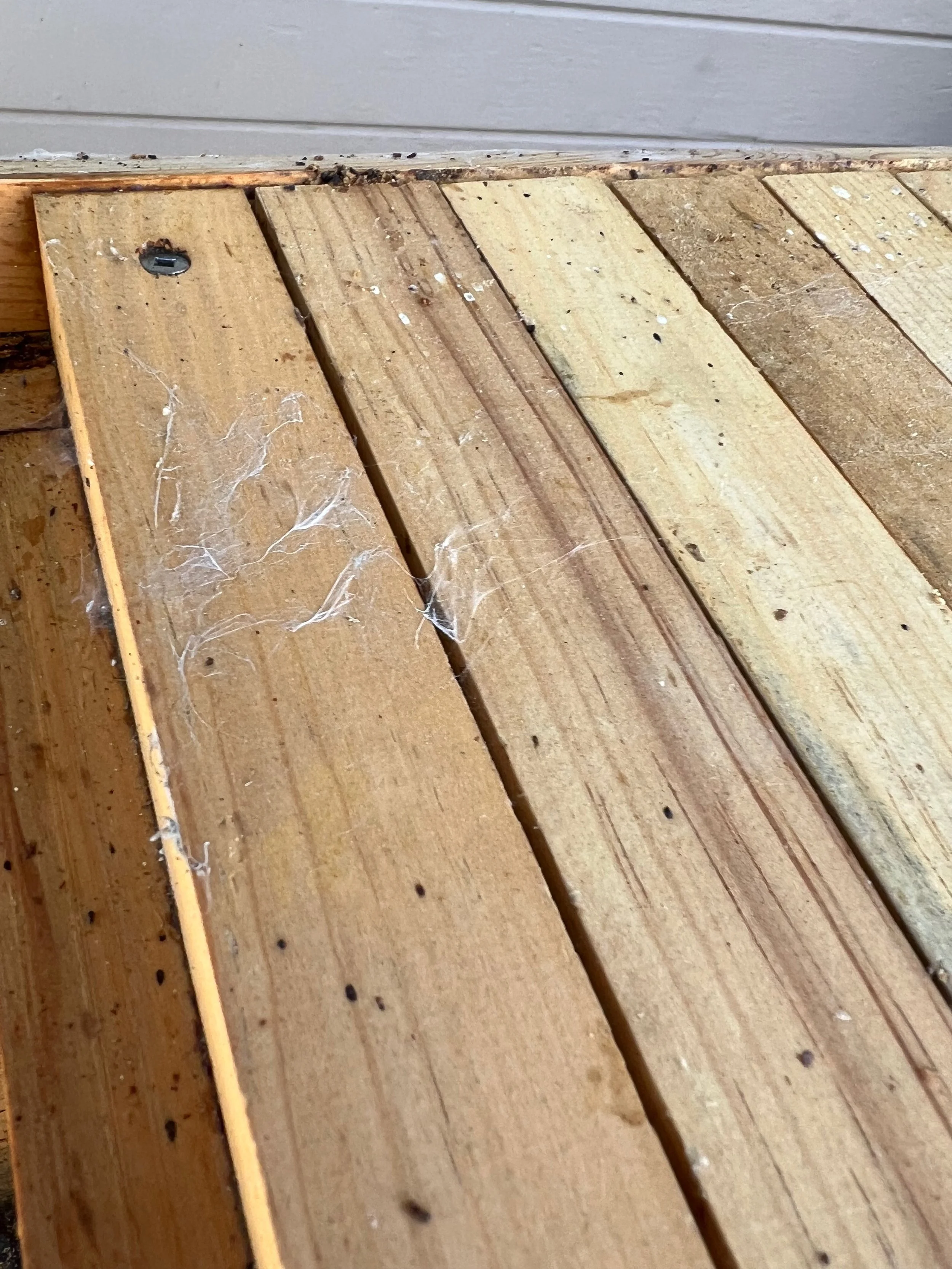Other than snipping lettuce for delicious salads (one such harvest above), I’ve had little time to hang out in the garden. Between work and the rain (and the rain, and the rain, and the rain), I’m very rarely in a place where I am doing any observing. That stinks, really, because observing the natural processes in my garden is one of the great joys of my life.
Anyway, we finally had a break in the rain late last week, so I went outside to do some exploring in between writing lectures. Spring peepers were making a racket in the nearby creek, our almond and nectarine trees were opening their buds, there were a few asparagus spears popping up, and I found chrysalis’ hanging on the fence wires.
But all was not well. Standing by the beehive for a while, I noticed a distinct lack of activity. The day was warm, above 50 degrees, and as I said, we were having a break in the rain. There should have been all sorts of busyness happening - new bees being born and orientating to the hive entrance, foragers out searching for nectar - but nope. Nothing. Later on I checked in with Tom and he said that he had noticed less activity, too.
You can tell a lot about a hive by just sitting by the entrance for 15 minutes, but sometimes you’ve just got to suit up and get in there to find out what’s going on, and this was one of those times. Saturday morning, Tom did just that, while I ran to school to water the new seedlings. When I came home, he met me outdoors with a sad face. The bees were gone.
It’s a hard thing, when your colony just disappears. Were they too cold this winter, or too wet? Did the leveling of the hive last autumn make them restless? I had noticed some ant activity but thought my heavy application of diatomaceous earth solved that problem. Was there some other sort of predation or disease? Tom didn’t find any dead bees, so it was a bit of a mystery. We already had a full afternoon planned, so we waited until Sunday to do a more thorough post-mortem. I’ve become allergic to bee stings over the last ten years, but since the bees were gone, I knew I could safely help Tom clean out the hive.
So on Sunday morning, we opened it up and started going through the bars one by one. I noticed some wax moth activity - no larvae, or moths, or eggs, or tunneling (all of which would have been extremely disgusting and concerning) but something that I’ve always suspected was frass (basically, insect poop). And it might be, I’m still not sure. You can see it below. There was also a little bit of webbing, which is how wax moths begin to pupate, but we found no pupae at all. We caught it in time, and got in there before the moths took hold. That was excellent, because there was a lot of honey in there, and it was not affected at all.
We took out bar after bar of honey, six full capped bars in total. We rarely take more than a bar at a time, so there was a lot in there to clear out. We cut the comb off the bars and put it all into our high-tech big bucket/colander system for draining. Then we started taking out the bars that had an inch of capped honey at the top, but were empty below.
Suddenly, we started noticing bees. Hmmmm. These must be bees from neighboring hives, we mused, coming around to take the honey - easy pickings! So we kept going through bars. Soon, there were more bees. Hmmmm. Tom pointed a finger at me and firmly directed me indoors, then suited up to continue cleaning out the hive.
I went inside and promptly ordered a new colony to be picked up in Davis in April. About five minutes later, Tom comes in and shows me a video on his phone. Turns out, when he got closer to the front of the hive, he found more bees - and a queen!
Well, that changed the game! I realized, it wasn’t just the ants, or the wax moths, or the moving of the hive, or the wet conditions. It was also that sudden swing in temperature, the sudden arrival of spring! The bees had swarmed.
A swarm, as you know, happens when the colony becomes discontent with their old queen for some reason (or when the hive gets too crowded, or when there are predations or disease - or a combination of all of the above), and they make a new queen. Once the new queen is born, the old queen flies off with roughly half the colony to find a new place to live, leaving the new queen to get busy laying eggs. This must be a new queen, left behind with some of the previous colony.
Ok then! Tom stopped taking out bars, and made sure the small group was tucked up tight within a very small space (six bars or so, with some honey). Then he furiously cleaned up old wax and vacuumed everything out of the back of the hive. It was an excellent opportunity to remove old comb and excessive propolis, as well as a few spiders.
Our hopes are not high that this tiny colony will survive. But, there will never be a better time to try, with warmer daytime temps and flowers blooming. Maybe, just maybe, they’ll make it. And if they do, what am I going to do with the new colony I ordered??? Oy.
Well, at least we’ll have plenty of honey for the year ahead!





